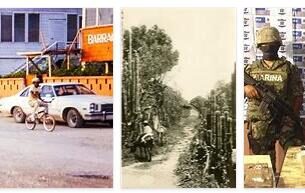CULTURE: MUSIC
Canadian music can be divided into three strands: the indigenous one (of Indians and Eskimos), that of European immigrants, and finally the more recent one of cultured music. Little is known of the music of the Indians; On the other hand, there is ample documentation concerning the Eskimos which makes it possible to recognize in their traditions, of a very primitive character, an affinity with Asian music (however, only one instrument is known, a wooden and moose skin drum). The musical heritage of European immigrants is often preserved in a purer state than in the country of origin and is of very high interest, especially as regards the rich French repertoire. Cultured music does not have a specific national character and is devoid of links with popular tradition, while the influences of Europe and the United States. Only in the nineteenth century did musicians of a certain importance establish themselves: Calixa Lavallée (1842-1891) and Guillaume Couture (1851-1915). Among the contemporary composers we remember John Weinzweig (1913-2006), Jean Papineau Couture and above all Sir Ernest MacMillan (1893-1973). The next generation, which drew inspiration from them, produced internationally acclaimed talents, such as Harry Freedman (1922-2005); Harry Somers (1925-1999); Clermont Pépin (1926-2006); Bruce Mather (b.1939), Gilles Tremblay (b.1932); André Prévost (b.1934). Among the major composers who have dedicated themselves to music for the theater we remember Gabriel Charpentier (b. 1925), Gary Kulesha (b. 1954), John Oswald (b. 1953), Robert W. Stevenson (b. 1954). The reference institution for Canadian music is the Canadian Music Center, Leonard Cohen (1934-2016), Neil Young (b.1945); Celine Dion (b.1968); Alanis Morrisette (b.1974); Micheal Bublè (b.1975), while in the 21st century The Weekend (b.1990) and Justin Bieber (b.1994) achieved world fame.
CULTURE: THEATER
In the French-speaking provinces there are reports of some seventeenth-century performances (Le Cid only ten years after the first in Paris), followed by moralistic reactions that allowed only didactic performances, usually in Jesuit colleges. The first permanent theaters in Québec and Montréal date back to the early nineteenth century. In the twentieth century, the first important group was that of the Compagnons de Saint-Laurent, active between the two world wars, when the first local comedian, Fridolin, triumphed. Since 1951 there has been the Théâtre du Nouveau Monde in Montreal. At the end of the 1960s, with the creation of the Center d’essai des auteurs dramatiques, original works by authors such as C. Gavreau (1925-1971) and J.-C. Germain (b. 1939) were represented. In the English-speaking provinces, after tours of famous actors since the beginning of the century. XIX, a lively movement of “Little Theaters”, generally linked to universities, occurred in the period between the two world wars. The first professional formations were the Stage Society (1948) of Ottawa and the Totem Theater (1951) of Vancouver. But of far greater importance was the Stratford Shakespearean Festival in Ontario, inaugurated in 1952 under the direction of Tyrone Guthrie. (1900-1971), which allowed many good local actors (such as Christopher Plummer) to work at home rather than, like their predecessors, trying their luck in London or New York. Through alternating phases of development and experimentation and economic difficulties, Canadian theater has remained constantly dynamic and multidirectional, gathering Hollywood influences, giving space to multiculturalism and the currents of the natives, supporting the avant-gardes. According to areacodesexplorer, Canada now has hundreds of companies, festivals and venues throughout the country, and Toronto is the third most important city in the world for English-language theater. Brad Fraser (b.1959), Connie Gault, Morris Panych, Jason Sherman are among the youngest and most popular authors of contemporary theater.
CULTURE: DANCE
Theatrical dance is a recently acquired phenomenon. The first ballet company, the Royal Winnipeg Ballet (later Winnipeg Ballet) appeared in 1939, a semi-professional expression of the Winnipeg Ballet Club, founded the previous year by Gweneth Lloyd and Betty Farrally. Since 1949 it has been a professional company largely influenced by the British tradition. Other professional ballet companies are the National Ballet of Canada (founded in 1951 in Toronto) and Les Grands Ballets Canadiens (founded in 1952 in Montreal). Young but already acclaimed performers trained in the National Ballet under the guidance of Reid Anderson are, among others, Martine Lamy, Kimberley Glasco, Jeremy Ransom, Rex Harrington. Contemporary dance is influenced by the American influence and, in the French-speaking regions, by that of the nouvelle danse French. A fast-growing company, founded in Toronto in 1987, is Ballet Jörgen.



